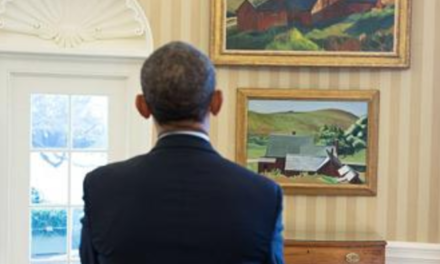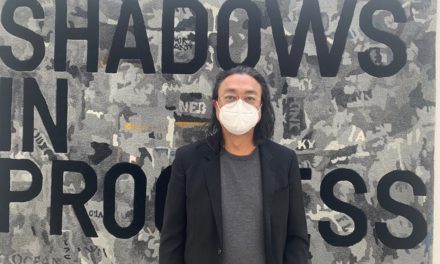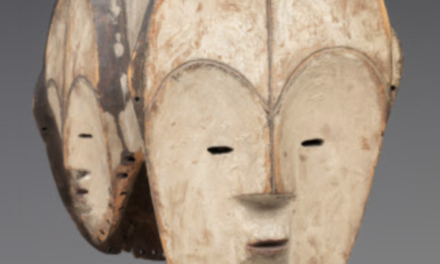Strange and glorious
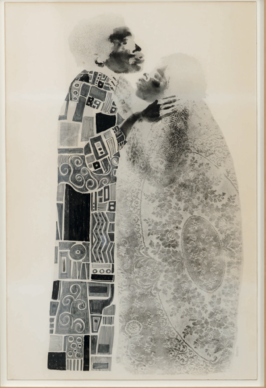
The American artist David Hammons (born in 1943) is a strange and glorious figure, frequently absent, yet always seeming to appear where he’s least expected.
The drawing center
The Drawing Center in New York has recently staged a large-scale exhibition of his works on paper, apparently defined by one of his obsessions: ghosts. More specifically, the exhibition – which ran until 23 May – displayed his body prints made between 1968 and 1979. He used his body as a tool to create these pieces, like a printing plate leaving mysterious marks on the paper. The results are enigmatic forms that exist halfway between the Holy Shroud and Man Ray’s rayographs.
In the Pinault collection
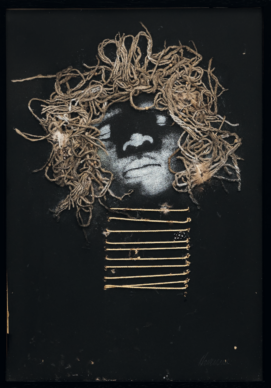
David Hammons has also made the news in France because his work features prominently in the newly opened Pinault Collection in Paris (Read here the report about the Pinault collection).
Unexpected appearances
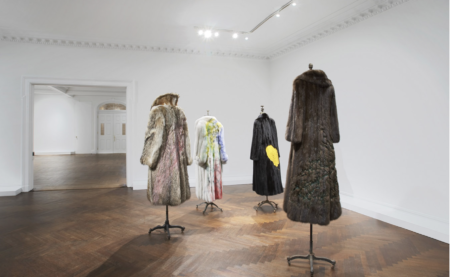
This spectral artist isn’t affiliated with any one gallery, and what we know of him is largely limited to now outdated images of a man selling snowballs in the street. But the artist is much more than a melting ice salesman. He occasionally graces certain galleries with unexpected appearances. This was the case, for example, in 2007 when he staged a show with Dominique Levy on New York’s Upper East Side, mischievously exhibiting fur coats that had been vandalised with paint splashes and rechristened in reference to famous artists. It was like an anti-bourgeois manifesto.
Hauser &Wirth

This is also the case right now at Hauser & Wirth in Los Angeles, where Hammons has restaged a performance that took place in the year 2000 at the Casa de Cristal in Madrid, composed of a mixture of technological sounds (made using fax machines) combined with the music of the conductor and composer Butch Morris, who died in 2013.
A risky strategy
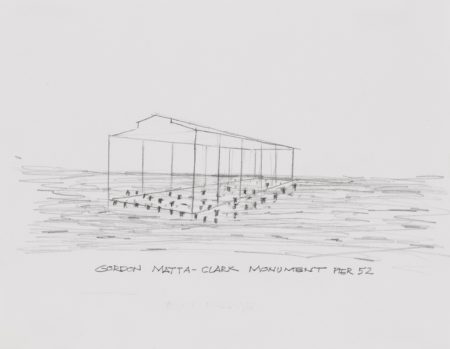
Mystery is a risky strategy for the artist. For a long time there has been a marked absence of African-Americans in the American art scene. David Hammons, who frequently addresses the reality of life for black people in the United States through his readymades, has himself overcome difficulties in an extraordinary way: his intermittent presence has made him a star.
Going down in history
And he’s now in the process of going down in history. In collaboration with the Whitney Museum he has created “Day’s End”, a spectacular and characteristically phantom-like work made from 15.2 x 113 metres of steel tubes. It’s an homage to another artist who is now deceased, an American who is still not widely known, Gordon Matta-Clark (1943-1978), who made sculptures on an architectural scale (See here the report about Gordon Matta Clark).
Ghostly ready-made
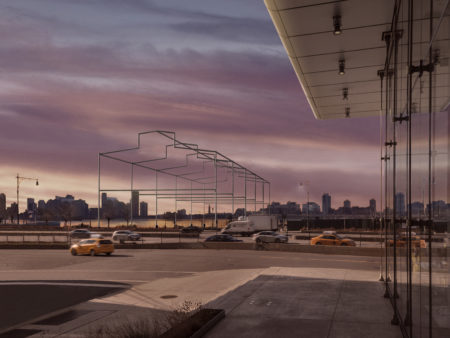
More specifically, Hammons’s “Day’s End” is a kind of ghostly readymade of an artwork made by Matta Clark in 1975. Adam Weinberg, the director of the Whitney Museum, explains in the video interview that David Hammons invokes the spirit of the Hudson and that of the dead artist to create this monumental work. (It’s also an opportunity to see a new photograph of Hammons in which he wears unique glasses that echo “Day’s End” with their ghost-like wire frames…)
6 years of fundraising

The story behind the large-scale project staged by the Whitney began in 2014 when Weinberg and Hammons visited the museum’s new building, which was still empty at the time, designed by Renzo Piano. This was followed by six years of conception and fundraising, 3 years of construction, and 4 weeks to assemble and install the entire piece on concrete stands. It is a monumental project. The budget for the operation amounted to 18 million dollars.
Technical difficulties

They encountered numerous technical difficulties given that the work, which is composed of “metal lines” like a drawing in space, and also like a piece of architecture, uses the exact shapes, dimensions and placement of the building chosen by Gordon Matta-Clark when he created a window of light in the building that was abandoned and since destroyed, situated just opposite the site of the current Whitney.
Minimum Security
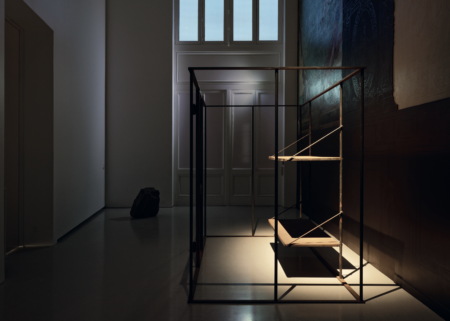
We should note that before this, in 1991, Hammons made a piece in a similar spirit called “Minimum Security”, which was also made using metal tubing and reconstructs an American prison cell for two people. It is currently exhibited as part of the Pinault Collection.
A phantom bridge between Paris and New York
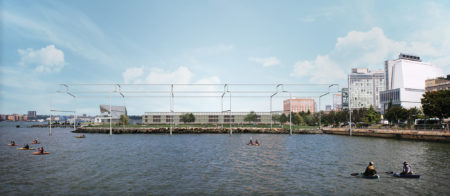
It is in this way that Hammons constructs a phantom bridge between Paris and New York, while the two cities are separated by a major public health crisis. We must believe in ghosts to allow the borders to fall.
Donating=Supporting

Support independent news on art.
Your contribution : Make a monthly commitment to support JB Reports or a one off contribution as and when you feel like it. Choose the option that suits you best.
Need to cancel a recurring donation? Please go here.
The donation is considered to be a subscription for a fee set by the donor and for a duration also set by the donor.

